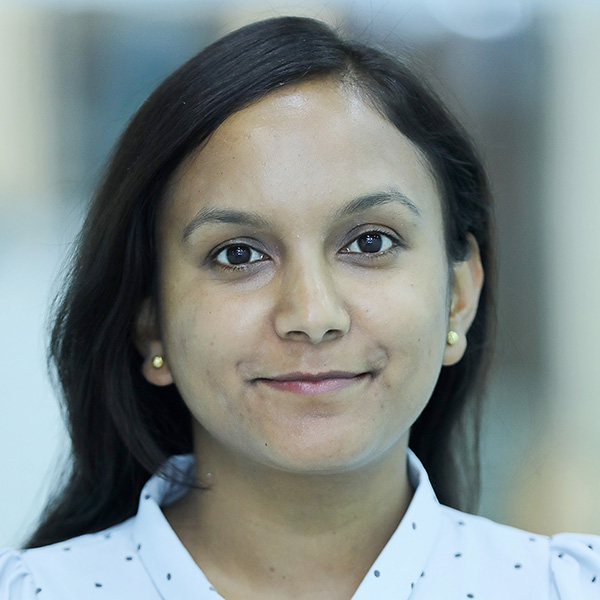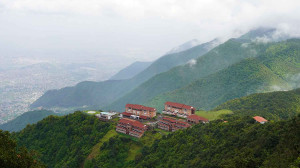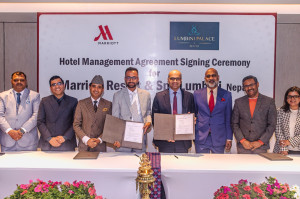Money
Marigold flowers are going to be rarer and dearer this Tihar, traders say
Celebrators can expect to pay Rs20 more per garland because marigolds will be hard to come by after their growing season.
Krishana Prasain
Flowers are going to be rarer and dearer this Tihar as the festival happens later than usual, when the growing season is almost over, due to the occurrence of the intercalary month in the lunar calendar.
Celebrators can expect to pay Rs20 more per garland because marigolds will be hard to come by after their growing season, and shipments from India will likely decline too, traders said.
It costs flower growers Rs40-45 to produce a flower garland, and the retail price ranges from Rs60 to Rs70, said Kumar Kasaju Shrestha, president of the Floriculture Association of Nepal. A one-metre-long garland contains 40 flowers.
Prasanjit Samanta, owner of New Calcutta Flower Shop at Kamalpokhari, said that the retail price could reach Rs70-80 per garland.
“Late season marigolds will be costlier,” said Samanta who opened his flower shop two years ago. He added that fewer flower shipments will be arriving from India this year which will also push up the price.
“Flower prices might increase during the festival, but we are making sure that there will be no artificial price hike,” Shrestha said. As there will be no imported flowers in the market for the upcoming festival, the association will take steps to prevent any price gouging.
Colourful blossoms are a major item during the festival as people festoon the doors and windows of their houses with strings of flowers, and sisters place garlands around the neck of their brothers as part of the rituals.
This year, demand across the country is expected to reach 1.5 million marigold, globe amaranth and chrysanthemum garlands, the association said.
Flower traders sold 2.5 million garlands worth Rs110 million during Tihar last year, but this year the turnover is likely to fall by 40 percent as the festivities will be kept down due to the coronavirus.
Traders imported 220,000 marigold garlands from India to cover a shortfall in production last year. Imports have been declining annually with an increase in domestic output.
“We are focused on fulfilling domestic demand with internal production,” Shrestha said.
The country produced 2.2 million garlands during the previous festival season. Output shrank this year in response to reduced demand caused by the Covid-19 pandemic.
In the past, domestic production used to account for 20 percent of the country's requirement, and the rest was imported, mainly from India, Shrestha said. But in recent years, locally grown flowers make up around 90 percent of sales, he added.
The floriculture sector suffered a big blow due to the Covid-19 pandemic as the government banned all public gatherings, festivals and official events, and demand for cut flowers and flowers used in religious ceremonies evaporated.
“The flower industry suffered losses totalling Rs2 billion in the seven months since the virus outbreak hit the country,” said Shrestha.
“We expected transactions to reach Rs3 billion in the last fiscal year 2019-20, but the turnover did not exceed Rs2.25 billion,” he told the Post. “Around 20 percent of the workforce employed in the floriculture sector is out of work,” he added.
Nursery owners are managing to keep their head above water, but the cut flower business is almost finished, he said.
The country imported flowers valued at Rs110 million in the last fiscal year while exports came to Rs40 million. Imports are down in the current fiscal year and exports are almost nonexistent, he said.
Shrestha said that customers could order flowers through e-commerce platforms or directly from the official web pages of flower entrepreneurs.
Most of the flowers sold in Kathmandu are brought from Dhanusha, Sarlahi, Siraha, Jhapa and Ilam.
Floriculture is being done on 158 hectares of land and around 44,000 people are directly and indirectly engaged in the sector. There are 800 commercial floriculturists in the country with a combined investment of Rs6.5 billion.
Bagmati province leads in the flower business, accounting for 60 percent of output and sales. Cut flowers and ornamental plants are most widely produced in the province.




 6.0700000000001°C Kathmandu
6.0700000000001°C Kathmandu















